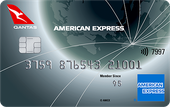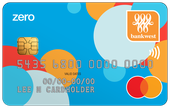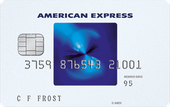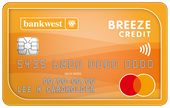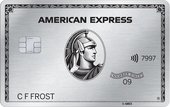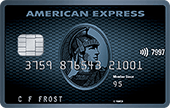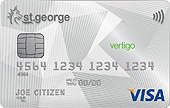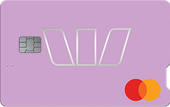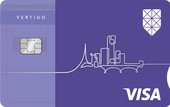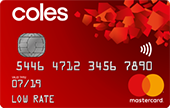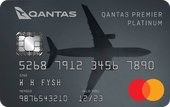Not sure how credit cards work or if you should get one? Read on for more details on what they are, how they work, what types of card exist, and tips to get the most out of them.
What is a credit card?
A credit card is a small, rectangular piece of plastic that confers on its owner the ability to borrow money from a bank (or other lender) to use when paying for goods and services. Even if you choose to pay with your mobile device, most banks still need to send you that piece of plastic – for now.
Credit cards are useful if you don't have enough money to pay for something now because you can pay it off over time with interest. In addition, many credit cards come with additional benefits such as earning rewards, access to airport lounges, and cash back. Using your credit card responsibly can also improve your credit score over time.
How do credit cards work?
Credit cards are generally used to buy everyday items and pay bills. Rather than using your own funds, as you would with a debit card or cash, purchases made with a credit card draw on a line of credit made available to you by whatever bank issued the card.
The amount you can spend with a credit card depends on your credit limit, which is determined by the issuer during the application process (although you can request it to be raised later). If you repay the balance in full each month, you will not pay interest. If you choose to pay off part of the balance, you will be charged interest.
So-called "no interest credit cards" are the exception to the rule. These cards charge a monthly fee rather than interest and are seen as being a compromise between buy now pay later and a typical credit card.
What types of credit card are there?
There are credit cards to suit the lifestyle and spending patterns of a wide variety of cardholders. These are some of the most popular types.
- 0% purchase credit cards: No interest is charged on purchases for an introductory period, so the carried-over balance is interest free until the introductory period is over. Often used to finance large purchases.
- Balance transfer credit cards: Special introductory interest rate (often 0%) for a specified period, on balances transferred from other cards. Used by many to reduce interest and get out of debt.
- Low interest credit cards: Cards whose interest rate on carried-over debt is at the lower end of the scale. More recently, no interest credit cards have come to market with a monthly fee instead of interest.
- No annual fee credit cards: Cards with $0 annual fee. These are generally no-frills and offer no benefits or perks.
- Rewards credit cards: Loyalty points, redeemable for rewards, are earned when purchases are made. Frequent flyer credit cards earn points into an airline's reward program, redeemable for flights or rewards.
What to look for when you compare credit cards
When you compare credit cards, there are a number of rates, fees, and charges to be aware of and compare.
- Annual fees. Many credit cards, especially those awarding rewards points on purchases and/or conferring complimentary benefits (e.g. free travel insurance), charge an annual fee. The fee can be anywhere between $30 and $1,500 or more, depending on the points and benefits attached to the card. However, some cards have no annual fee.
- Credit limit. All credit cards come with a credit limit, typically anywhere between $1,000 and $100,000. The card’s limit is based on the cardholder’s annual income and the bank’s assessment of their creditworthiness and ability to repay the amounts borrowed. Once the card’s credit limit is reached (that is, once the total amount owing on the card is equal to the credit limit, or when the difference between the credit limit and the amount owing is less than the amount of an attempted new purchase), no further purchases can be made with the card until some of the balance owing has been repaid. If you think your credit limit is too low, you can apply to the bank to increase your credit limit once you have had the card for a while and managed it responsibly, by making at least the minimum repayment on time every month and paying off large parts of the balance on a regular basis.
- Introductory interest rates. Many credit cards have an introductory interest rate on balance transfers and / or purchases. Introductory rates are generally 0% and are usually reserved for new customers only. Check what the rate will revert to when the introductory rate ends.
- Ongoing purchase interest rates. Credit card interest rates (charged on carried-over debt and also on new purchases where there is existing carried-over debt) are typically higher than the rates for other forms of borrowing, such as home loans and personal loans – in some cases very much higher. Credit card interest rates in Australia mostly fall in the range 10% p.a. to 22% p.a., although there are a few cards with rates lower and higher than this range.
- Cash advance rates. If you use your credit card to make a cash withdrawal from your credit card account (either over-the-counter or via an ATM), check what the interest and fee will be. Interest will usually be charged from the withdrawal date until the repayment date, even if there is no carried-over debt on the account. Additionally, many cards have a cash advance interest rate that is higher — often by as much as 2% p.a. – than the interest rate charged on purchases. A one-off fee also usually applies.
- Interest-free period. The due date for repayment usually falls between 14 and 25 days after the end of the monthly billing cycle. For this reason credit cards are often described as having ‘up to 44 days interest free’ or ‘up to 55 interest-free days’.
- Repayments. On a due date specified by the bank, the credit card owner can choose whether to repay in full the accumulated balance of their purchases for the month, or make only a minimum repayment (typically 2% or 2.5% of the balance, or a fixed amount such as $5) and pay interest for continuing to borrow the remaining balance.
- Sign up bonus. Many issuers offer a welcome bonus for signing up, but terms apply. Check how much you will have to spend and within what period in order to get the bonus.

